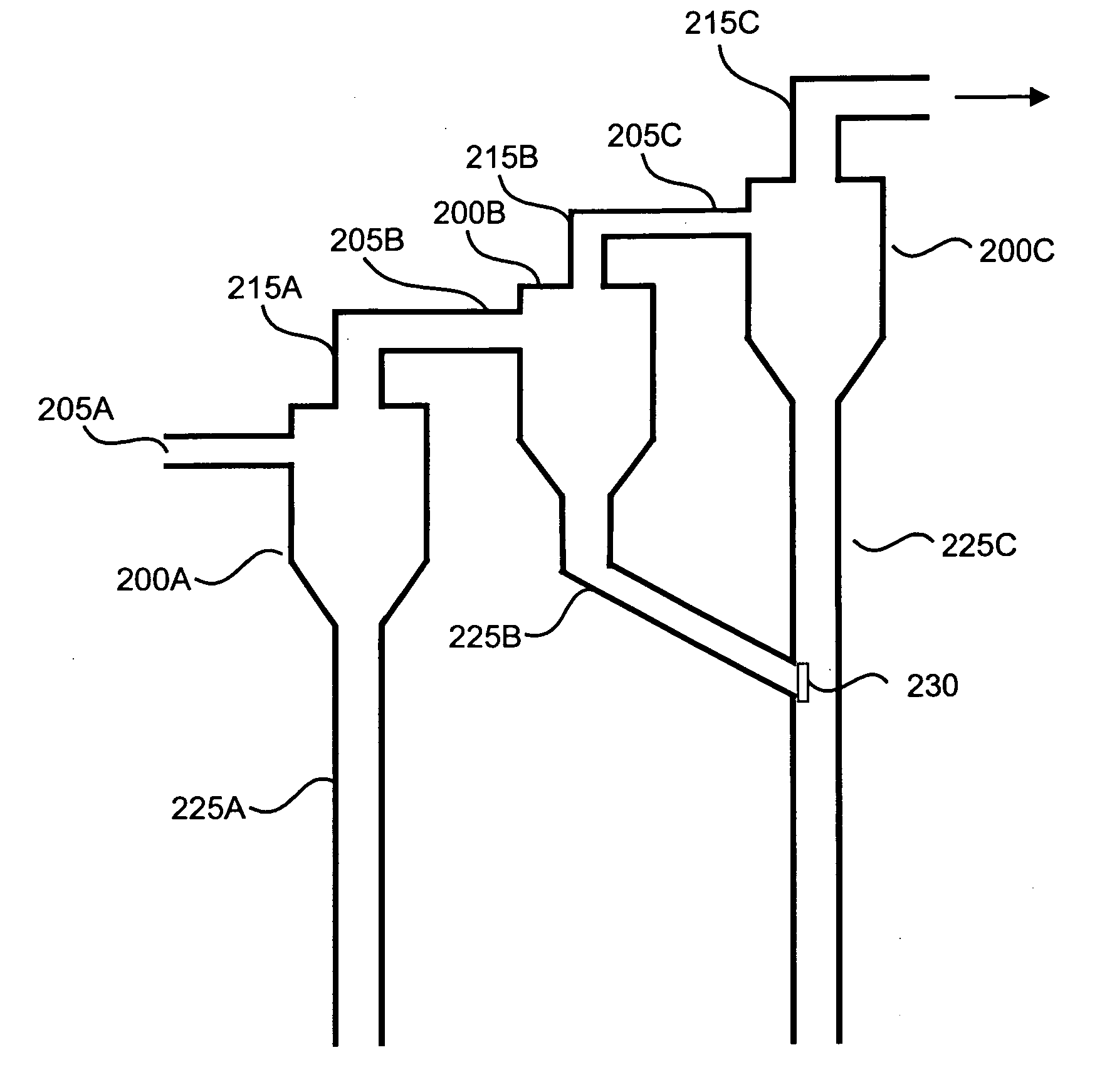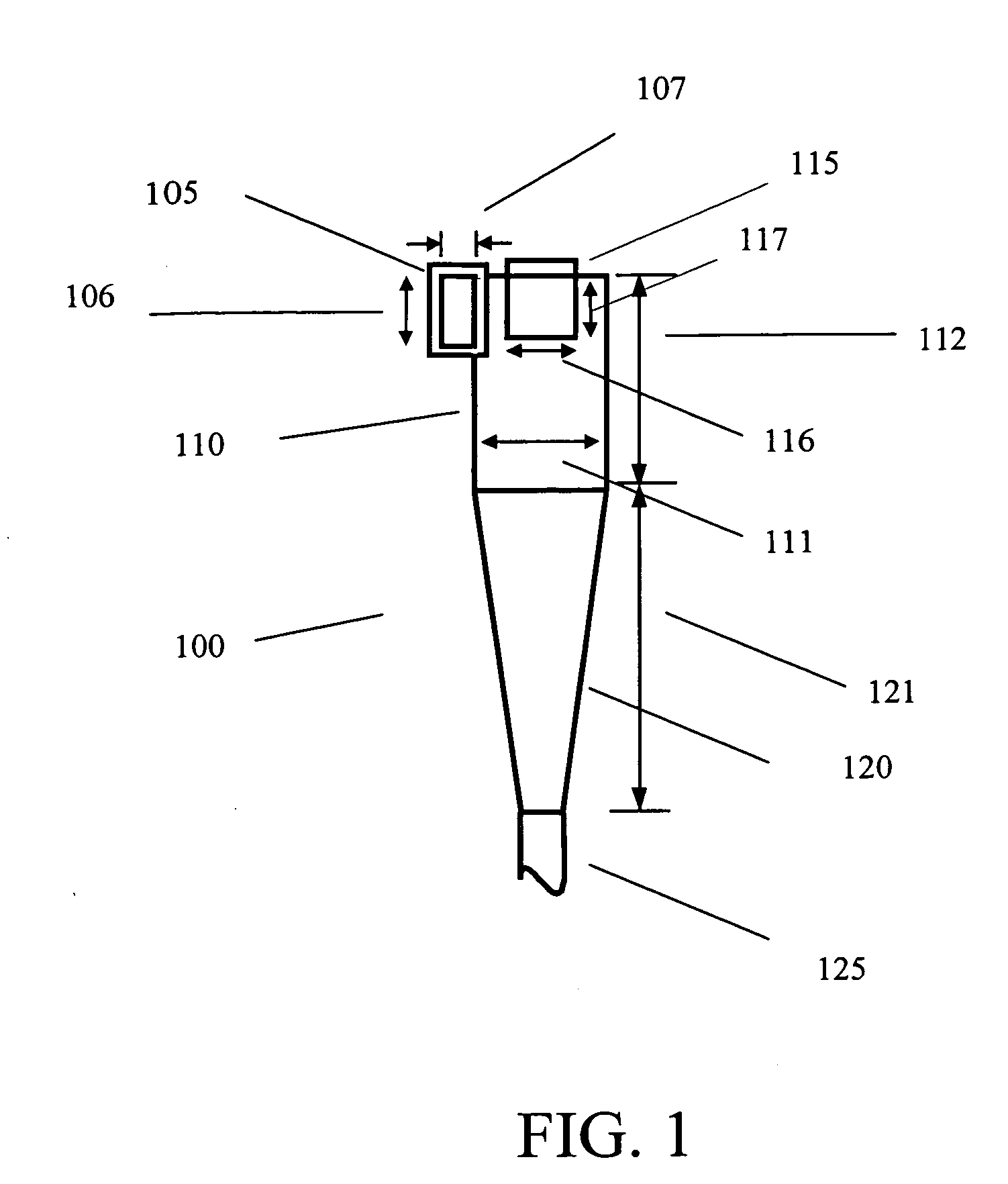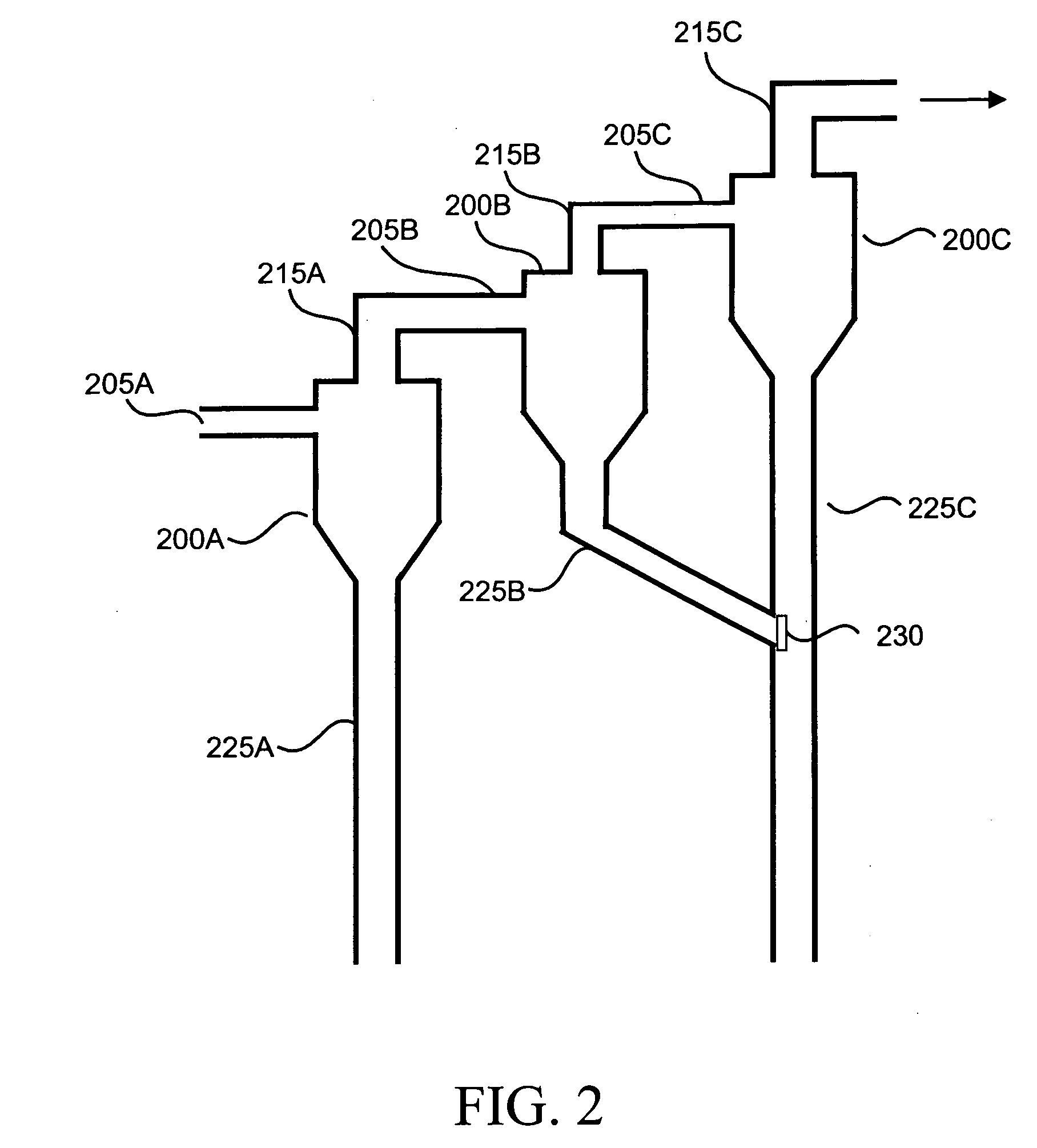Gas-solids separation device and method
- Summary
- Abstract
- Description
- Claims
- Application Information
AI Technical Summary
Benefits of technology
Problems solved by technology
Method used
Image
Examples
Embodiment Construction
I. Overview
[0014] This invention provides a method and apparatus for removing solids particles from a gas-solids reaction system. In particular, the process and apparatus of the invention provide improved solid particle recovery via a novel configuration and method for operating sequential cyclone separator stages.
[0015] In an embodiment, the invention provides a multistage cyclone separator, where the dipleg output flows of two or more cyclones are merged together into a single output flow. This single output flow then continues to the dust pot, particle bed, or any other part of a reaction system suitable for receiving an output flow of solid particles from a cyclone separator. Combining the dipleg output flows of two or more cyclones into a single output flow allows multiple cyclone stages to operate with high efficiency when the input flows of one or more the stages have a relatively low solids content. This embodiment also reduces the likelihood of a dipleg becoming plugged or...
PUM
| Property | Measurement | Unit |
|---|---|---|
| Diameter | aaaaa | aaaaa |
| Diameter | aaaaa | aaaaa |
| Diameter | aaaaa | aaaaa |
Abstract
Description
Claims
Application Information
 Login to View More
Login to View More - R&D
- Intellectual Property
- Life Sciences
- Materials
- Tech Scout
- Unparalleled Data Quality
- Higher Quality Content
- 60% Fewer Hallucinations
Browse by: Latest US Patents, China's latest patents, Technical Efficacy Thesaurus, Application Domain, Technology Topic, Popular Technical Reports.
© 2025 PatSnap. All rights reserved.Legal|Privacy policy|Modern Slavery Act Transparency Statement|Sitemap|About US| Contact US: help@patsnap.com



